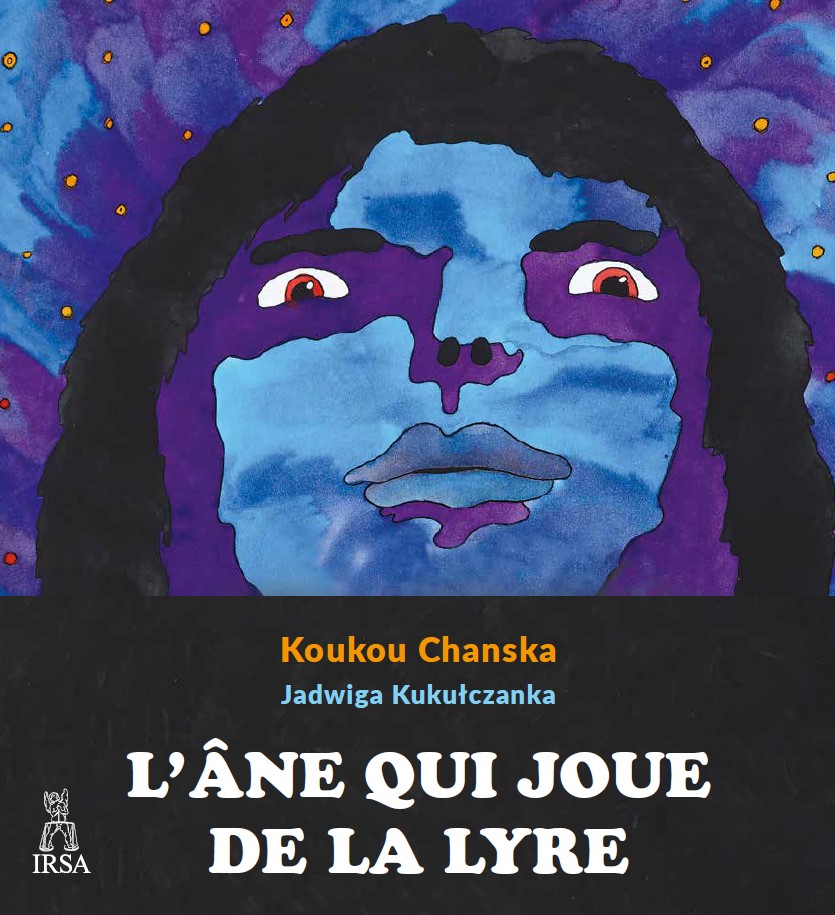- Cracow 2024
- 230 x 251 mm, hardback
- 279 pages, 109 illustrations
- ISBN 978-83-89831-45-3
L’Âne qui joue de la lyre (Donkey playing the lyre) – a legendary script by Jadwiga Kukułczanka, which enchanted Wojciech Jerzy Has and became his last unexecuted film project. Kukułczanka’s play is a ‘total work of art’ – a journey in time and space, full of surprising encounters, reaching back to the tradition of Socratic dialogues. The structure of the play combines ludic elements in the spirit of commedia dell’arte with an erudite message; the spoken words are quotations or paraphrases from specific writings and literary works: the Bible, the Koran, the ancient epic Gilgamesh, literary classics. The result is a philosophical morality play, a spectacular metaphor of human destiny. Alongside two mythical lovers wandering through history, dozens of historical figures appear on stage, arguing about social theories, the organisation of the state or the role of chance in life; Plato argues with Hitler, Seneca with Machiavelli, Montaigne with Gilgamesh. The myth of eternal love clashes with a chain of historical cataclysms: the chaos of wars, the violence of revolutions; scenes of a lively ball intertwine with a funeral procession – as in the medieval fight between Carnival and Lent. The L’Âne qui joue de la lyre was staged and broadcasted by radio France Culture, and plans for a theatre production with psychedelic stage set and costumes designed by Jan Sawka were under way; work on Has’ film was interrupted by the onset of the martial law in Poland in 1981.
The publication of this book was a great dream of Jadwiga Kukułczanka who, however, did not live to see its completion; Jan Sawka and Wojciech Jerzy Has have passed away, too – but the traces of their joint project remain: a screenplay, a radio play, ambitious plans. Our book, published in French, as is the author’s version of L’Âne qui joue de la lyre, is dedicated to this legend. Jadwiga Kukułczanka’s script and memoirs are accompanied by essays by Krystyna Czerni and Tadeusz Lubelski explaining the phenomenon of this unexecuted project.
Jadwiga Kukułczanka (1933–2020) was an eminent translator and film producer, circulating for years between France and Poland, active in France under the pseudonym Koukou Chanska. Associated with the theatre community, she collaborated with the editorial board of the biweekly Teatr (Theatre), and translated into Polish the works by Jean Anouilh, Henry de Montherlant and Georges Neveux. It is to her that we owe the first French premieres of the plays of the Polish playwrights: Witold Gombrowicz, Jerzy Szaniawski, Karol Wojtyła and by Witkacy, in whose reception and popularisation in France Kukułczanka was most actively engaged, having published translations of his plays and preparing radio programmes devoted to him. As a film producer and organiser of film festivals, she worked with the eminent film directors Wojciech Jerzy Has, Jerzy Kawalerowicz and Roman Polański. Jadwiga Kukułczanka died in 2020 in Paris, taking active part in the work on this book until the end.
Jan Sawka (1946–2012) – Polish visual artist, from 1977 active in the United States. An outstanding graphic artist, illustrator and stage designer, before leaving the country he co-created the alternative trend of student culture, being one of the pillars of Polish counterculture at the end of the 1960s and the beginning of the 1970s. His designs were distinguished by their characteristic contrasting colours, simplified forms, stylised lettering and fluid contours – drawing on the aesthetics of pop art and Art Nouveau. Sawka achieved particular mastery in the design of posters and stage decorations, in collaboration with the STU Theatre and ‘Kalambur’ Theatre in Poland, and with American off-Broadway theatres, the Samuel Beckett Theater in New York, or The Harold Clurman Theater in Michigan. While designing spectacular sets, Sawka remained a traditional graphic artist and prolific painter – constantly experimenting with technique and testing the boundaries of disciplines, creating multi-layered banners, multimedia projections and monumental set designs. In 1976, while in Paris, he designed the costumes and around 70 mock-ups for the theatrical staging of Jadwiga Kukułczanka’s play L’Âne qui joue de la lyre (Donkey playing the lyre) – and it is these very designs that have been reproduced in the present book.

CONTENTS
Józef Grabski
L’Âne qui joue de la lyre, Wojciech Has et Jan Sawka. La destinee d’une oeuvre
Koukou Chanska Jadwiga Kukułczanka
Rencontres avec Wojciech Has
Koukou Chanska Jadwiga Kukułczanka
L’Âne qui joue de la lyre. Suite en 25 moments
Tadeusz Lubelski
Un film non-accompli
Krystyna Czerni
L’Esprit de Witkacy. Projets de theatre de Jan Sawka pour L’Âne qui joue de la lyre de Jadwiga Kukułczanka (1976)
Projets de theatre de Jan Sawka
Index des noms
Orders can be placed via email irsa@irsa.com.pl.